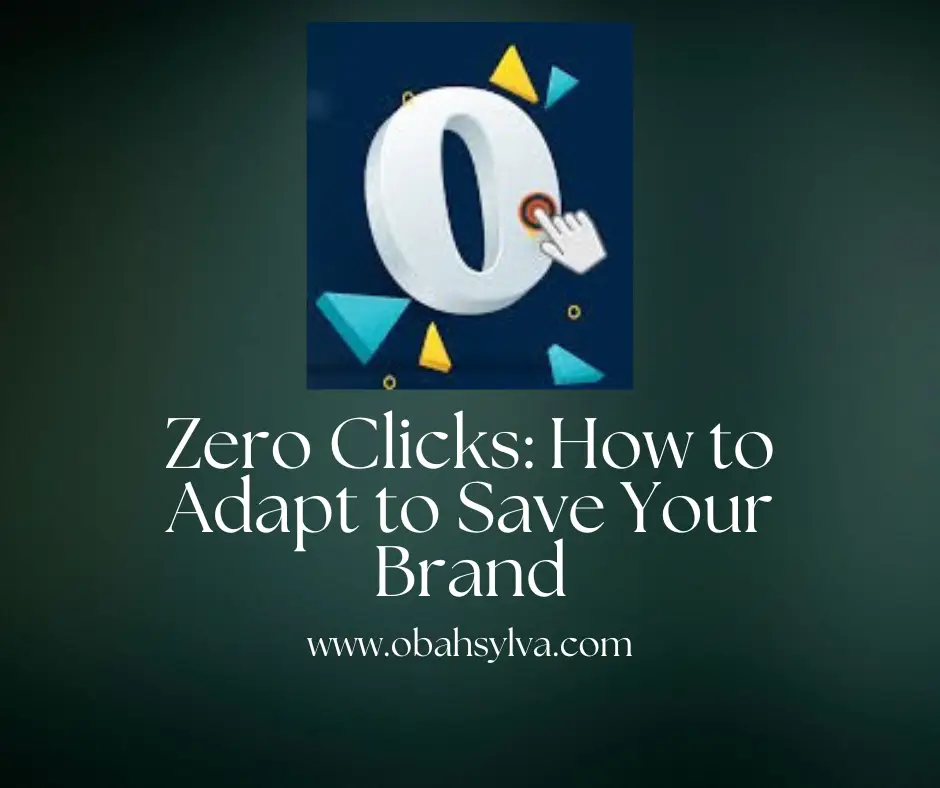
Zero Clicks? The days when a top Google ranking guaranteed steady website traffic are gone. The rise of zero-click searches has rewritten the rules of online visibility, leaving brands scrambling to adapt. Today, more than half of search queries end without a single click, as users find everything they need directly on search results pages through featured snippets, knowledge panels, and AI-generated overviews.
For Google users, it feels efficient. For businesses, it means fewer opportunities to attract visitors, even when they secure the coveted number one spot. The challenge is clear: visibility is no longer about traffic alone but about recognition, recall, and presence.
Experts describe this shift as the “awareness gap.” Your content might appear on a results page, yet your brand goes unnoticed because users never engage beyond the snippet. This gap between being seen and being remembered is where many companies are losing ground.
Zero-click searches reshape the discovery stage of the customer journey. Where websites once stood as the central destination for information, search engines and AI summaries now intercept attention before a user reaches your platform. That means early impressions, which shape consumer perception, often happen without any direct interaction with your site.
Read Also:
There are many variations of passages of Lorem Ipsum available, but the majority have suffered alteration in some form, by injected humour, or randomised words which don’t look even slightly believable. If you are going to use a passage of Lorem Ipsum, you need to be sure there isn’t anything embarrassing hidden in the middle of text.
The impact is profound. SEO remains important, but its influence has weakened at the top of the funnel. Even the best-optimized content risks invisibility if users never click. Competitors who combine strong organic strategies with paid campaigns are winning the fight for space, while others are forced to rethink how they measure success.
Marketers are responding by shifting focus from traffic to visibility. Paid ads have become a lifeline, ensuring brand names and messages stay in front of audiences even in crowded search landscapes. These campaigns act as insurance against brand invisibility, guaranteeing placement where organic reach alone falls short. The real power lies in building familiarity, users may not click an ad, but early exposure makes them more likely to recall a brand when it matters most.
Success in the zero-click era requires a new playbook. Companies must align their SEO with targeted advertising, reinforce organic achievements with strategic paid placements, and expand brand presence across communities, social platforms, and unowned channels where research increasingly takes place. Metrics also need to evolve. Instead of measuring only site traffic, businesses should track branded search volume, impression lift, and visibility across search features and digital platforms.
The adjustment extends to boardrooms. Executives used to equating website traffic with success must now understand that visibility itself is impact. Users may not land on a brand’s site, but if they repeatedly see the name across SERPs, snippets, and ads, awareness is taking root.
Zero-click isn’t the end of SEO, it is an evolution. Brands that adapt quickly, blending organic authority with paid visibility, will thrive. Those that cling to traffic as the sole indicator of success risk fading from view. The advantage lies with marketers who see this shift not as a threat but as an opportunity to redefine presence in a clickless world.
The future of search is already here, and survival depends on moving first. Brands that embrace visibility as the true measure of influence will not only save their presence but strengthen it.
